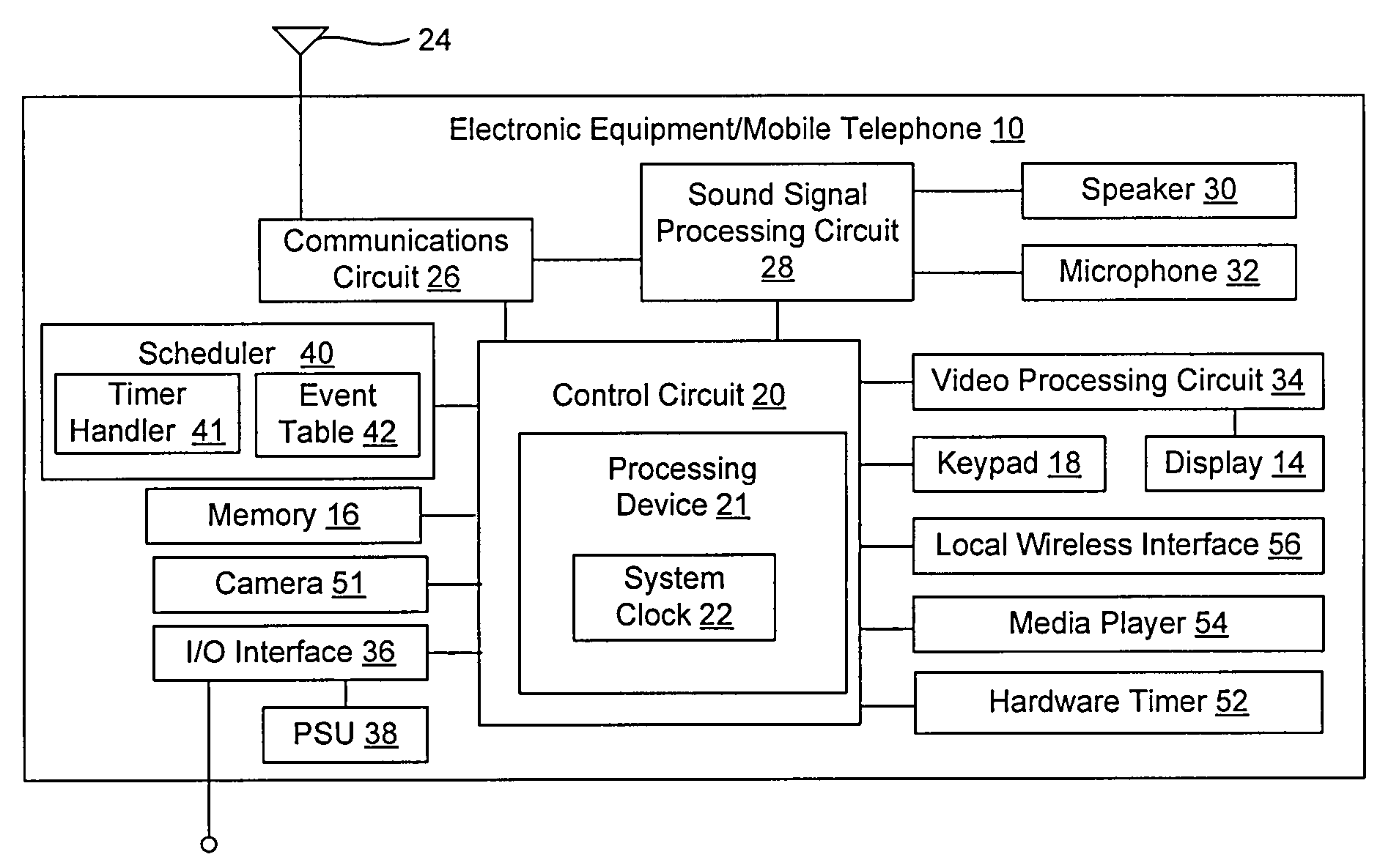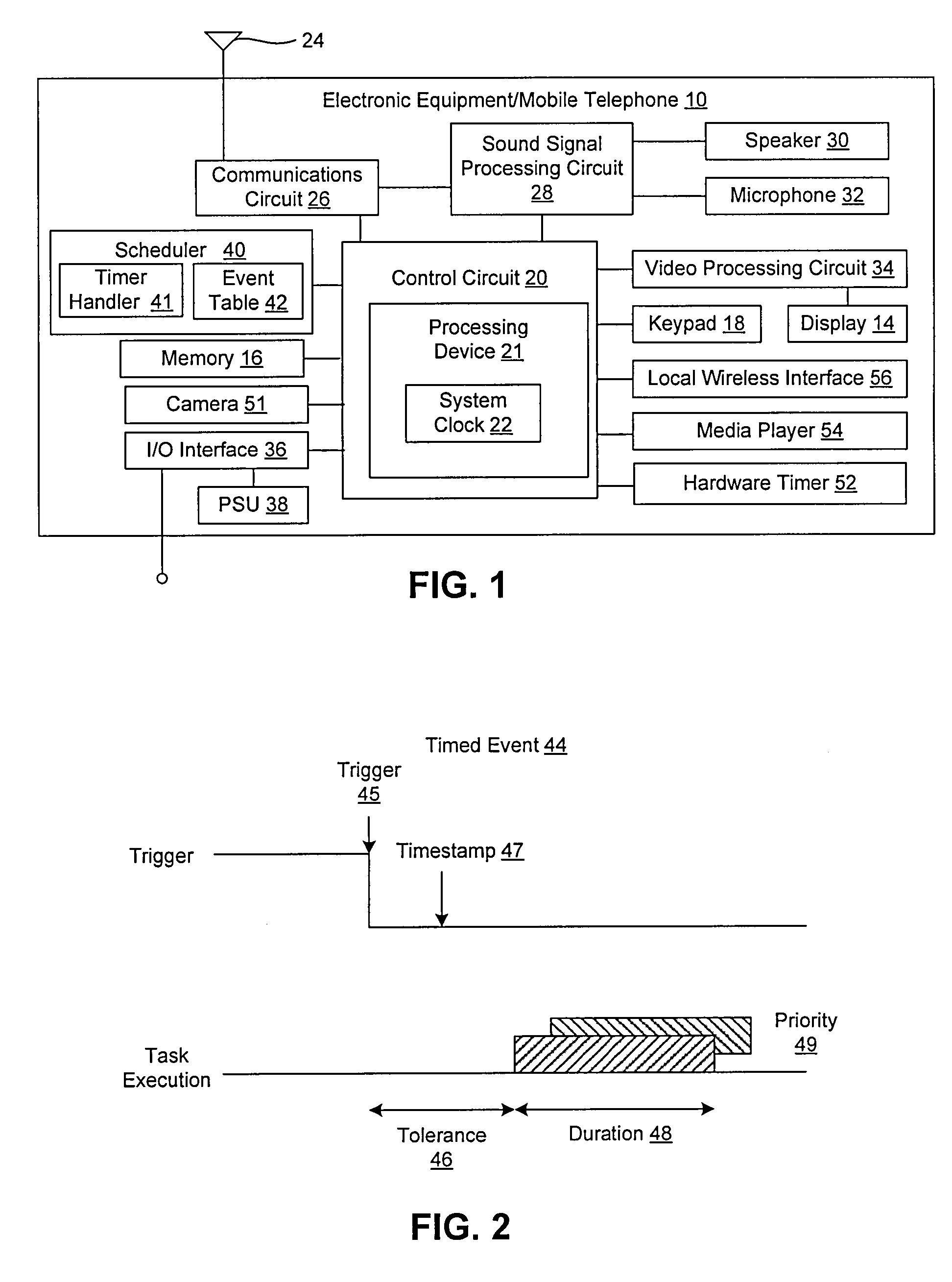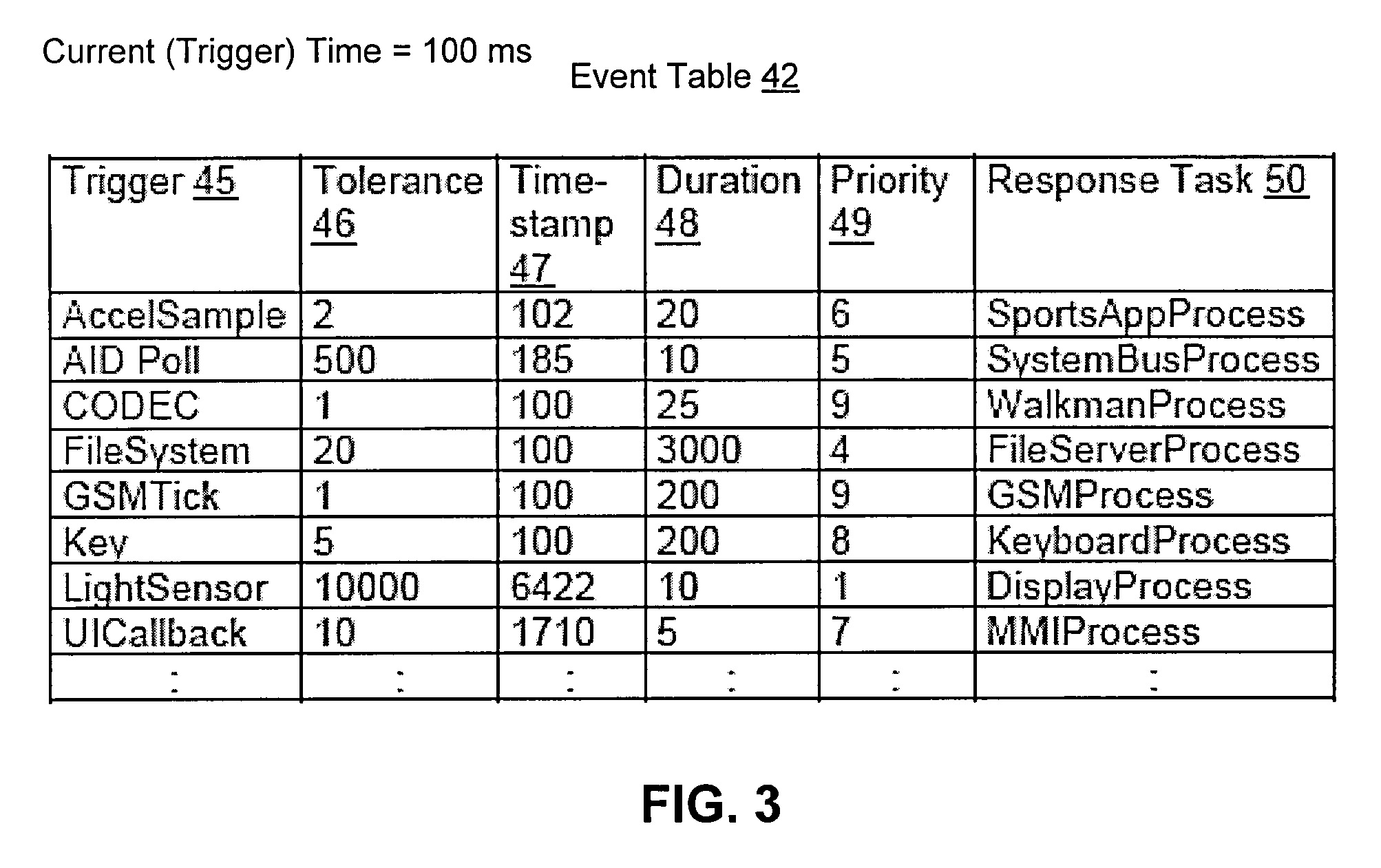Power saving scheduler for timed events
a timed event and power saving technology, applied in multi-programming arrangements, instruments, generating/distributing signals, etc., can solve the problems of reducing the efficiency of waking time and sleep time, cpu clock rampage delay, and cpu clock speed, so as to improve the consumer experience of portable electronic devices, reduce current waste, and increase overlap
- Summary
- Abstract
- Description
- Claims
- Application Information
AI Technical Summary
Benefits of technology
Problems solved by technology
Method used
Image
Examples
Embodiment Construction
[0043]Embodiments of the present invention will now be described with reference to the drawings, wherein like reference numerals are used to refer to like elements throughout. It will be understood that the figures are not necessarily to scale.
[0044]The following description is made in the context of a conventional mobile telephone. It will be appreciated that the invention is not intended to be limited to the context of a mobile telephone and may relate to any type of appropriate electronic device, examples of which include a computer, a media player, a gaming device, or similar. For purposes of the description herein, the interchangeable terms “electronic equipment” and “electronic device” also may include portable radio communication equipment. The term “portable radio communication equipment,” which sometimes hereinafter is referred to as a “mobile radio terminal,” includes all equipment such as mobile telephones, pagers, communicators, electronic organizers, personal digital as...
PUM
 Login to View More
Login to View More Abstract
Description
Claims
Application Information
 Login to View More
Login to View More - R&D
- Intellectual Property
- Life Sciences
- Materials
- Tech Scout
- Unparalleled Data Quality
- Higher Quality Content
- 60% Fewer Hallucinations
Browse by: Latest US Patents, China's latest patents, Technical Efficacy Thesaurus, Application Domain, Technology Topic, Popular Technical Reports.
© 2025 PatSnap. All rights reserved.Legal|Privacy policy|Modern Slavery Act Transparency Statement|Sitemap|About US| Contact US: help@patsnap.com



